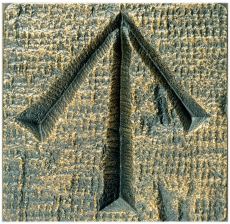Sir Thomas Livingstone Mitchell
(1792-1855)
Thomas Livingstone Mitchell was born at Craigend, Stirlingshire in Scotland, son of a Harbour Master. In his career in the British Army, he appears to have received staff officer training at one of the military colleges in England. He had a flair for drawing and painting in his youth and continued to assist him through out his life. This was particularly true for his sketching ability which he used in his work in mapping and such sketches appeared in the books which he published during his time in New South Wales.
It is evident that his staff officer training must have included surveying and the preparation of roads. He was particularly taken with this aspect of military work. He achieved a distinguished career as a surveyor in the Napoleonic Peninsular War in Spain, reaching the rank of Major. He was appointed deputy to Surveyor-General Oxley of the NSW Colony in 1827 and, on Oxley’s death, took over the role of Surveyor-General.
His role in the establishment of a major road system in New South Wales will appear throughout the story of the Convict Trail. There were those in the Colony at that time who respected his abilities as an explorer but deplored his determined approach to setting the roads to be as “straight as possible”. They believed that he ignored the need of the pastoralists and farmers for water and feed along his chosen route. Baron von Hugel had some quite strong words to say about him and his avid desire for recognition, fame and even notoriety. Most considered him very arrogant and many suffered under his temper which at times bordered on the explosive. Those in authority over him viewed him with some aprehension.
Governor Fitzroy went so far as to write in about 1850:
“It is notorious that Sir Thomas Mitchell’s unfortunate impracticality of temper and spirit of opposition of those in authority over him misled him into frequent collision with my predecessors.”
Mitchell explored northern and western New South Wales in 1831 and 1835. In 1836, he explored down the River Darling, across the River Murray and arriving at the Victorian coast near Portland. He was surprised to find the area already occupied, with whalers’ huts and a farm belonging to the Henty family nearby. Although he had several Aboriginal men as guides, he wrote of the encounters of his team with local aboriginal people and attacks in some cases where his men dispersed the attackers with some deaths resulting. In a statement in one of his books, he went so far as to say that he passed through land which was so inviting and still without inhabitants. Nevertheless, in his writings, he often refers to the fact that he proceeded over land where he had encounters with inhabitants and owners of the land. A very curious and conflicting pair of commentaries!
Mitchell married Mary Blunt in 1818 and their family extended to six boys and six girls. He was knighted in 1839 as Sir Thomas Mitchell and carried on his role in the Colony as Surveyor-General until c1851. He died in Sydney on 5 October, 1855.
It is evident that his staff officer training must have included surveying and the preparation of roads. He was particularly taken with this aspect of military work. He achieved a distinguished career as a surveyor in the Napoleonic Peninsular War in Spain, reaching the rank of Major. He was appointed deputy to Surveyor-General Oxley of the NSW Colony in 1827 and, on Oxley’s death, took over the role of Surveyor-General.
His role in the establishment of a major road system in New South Wales will appear throughout the story of the Convict Trail. There were those in the Colony at that time who respected his abilities as an explorer but deplored his determined approach to setting the roads to be as “straight as possible”. They believed that he ignored the need of the pastoralists and farmers for water and feed along his chosen route. Baron von Hugel had some quite strong words to say about him and his avid desire for recognition, fame and even notoriety. Most considered him very arrogant and many suffered under his temper which at times bordered on the explosive. Those in authority over him viewed him with some aprehension.
Governor Fitzroy went so far as to write in about 1850:
“It is notorious that Sir Thomas Mitchell’s unfortunate impracticality of temper and spirit of opposition of those in authority over him misled him into frequent collision with my predecessors.”
Mitchell explored northern and western New South Wales in 1831 and 1835. In 1836, he explored down the River Darling, across the River Murray and arriving at the Victorian coast near Portland. He was surprised to find the area already occupied, with whalers’ huts and a farm belonging to the Henty family nearby. Although he had several Aboriginal men as guides, he wrote of the encounters of his team with local aboriginal people and attacks in some cases where his men dispersed the attackers with some deaths resulting. In a statement in one of his books, he went so far as to say that he passed through land which was so inviting and still without inhabitants. Nevertheless, in his writings, he often refers to the fact that he proceeded over land where he had encounters with inhabitants and owners of the land. A very curious and conflicting pair of commentaries!
Mitchell married Mary Blunt in 1818 and their family extended to six boys and six girls. He was knighted in 1839 as Sir Thomas Mitchell and carried on his role in the Colony as Surveyor-General until c1851. He died in Sydney on 5 October, 1855.

